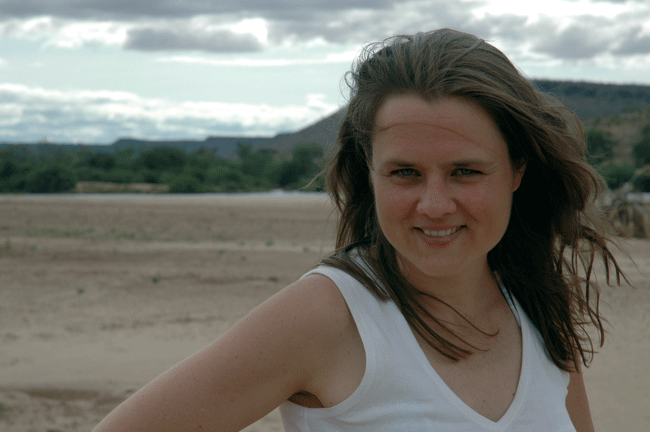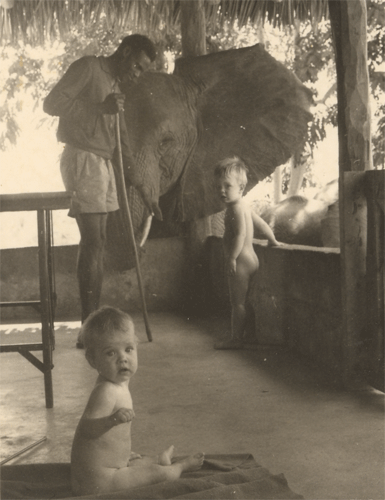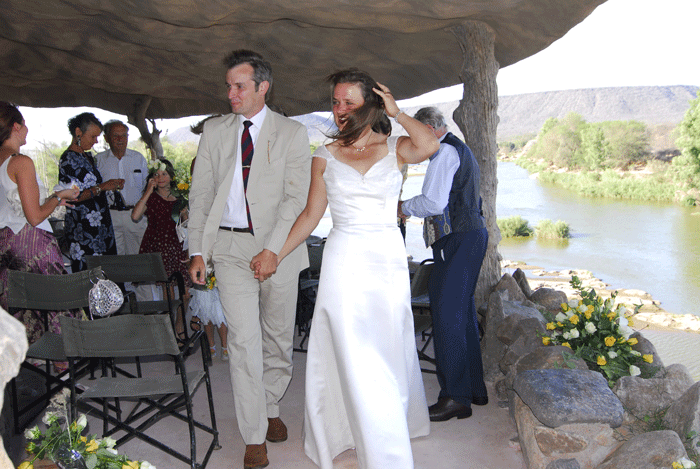About the Author
My name is Tanya Saunders. I was born on the 4th July 1973, in Denmark, to an Kenyan/English father and Danish mother, but was taken home to Kenya when I was just two months old. This was to be the country where I spent my childhood and much of the first 30 years of my life... and indeed where I have chosen to settle. Inevitably, life has always brought me back to Africa, time and again…
My family connections with Africa go back to the 1920s, when my grandfather, a civil engineer, was building railway bridges and other infrastructure across the continent. He returned to England before World War 2 and was part of the team that designed and built the Mulberry Harbours for the D-Day landings. In 1945, after the war had ended, my grandfather hired an RAF bomber and piled his whole family (wife & five kids) – plus the pilot of course – into the plane and they flew to Africa – my father was seven years old at the time - that was the beginning of my family’s love affair with Africa.
My father moved from Rhodesia (as it was then) to Kenya in the 1950s, when he was 19 years old, and joined the National Parks service as a game warden. However due to his bad hearing (nerve damage from bombs during the war), he had trouble with certain aspects of the job (firing a rifle, radio communications when flying aeroplanes, and so on) and felt he could have more impact as a wildlife film-maker. Over the years, he has become one of the most highly respected film-makers in his field, and has also worked on many big budget feature films like “Out of Africa” and “Gorillas in the Mist”, for example. In 1998, he gave up all commercial film-making and launched the African Environmental Film Foundation, a non-profit charity making educational films about environmental issues in Africa, for the people of Africa, in their own languages.
My childhood was charmed in many ways - the older I get and the more I see of the world, the more I am reminded of the uniqueness of my upbringing. Due to the amount of publicity gained and direct assistance to the National Parks given as a result of my father’s films, we were able to build a house and live inside the Tsavo East National Park. My father still lives there today. We had no garden and no fences, just our lovely wooden house looking out over Tsavo, which is a beautiful rugged space the size of Israel – a few miles away from the site of the famous “Maneaters of Tsavo” story. I grew up with elephants on my doorstep – literally. I did not have a dog or a cat, but all the animals became my “friends”, from the tiny squirrels and brightly coloured birds to the massive elephants and imperial lions. I wasn’t too keen on the buffalo though – they always frightened me as a child!
Perhaps my brother and I missed out on all the conventional trappings of childhood (kindergarten and cartoons and TV), but instead we had the whole of Africa as our playground – when we were not being home-schooled by my mother – I did not go to any kind of conventional school before I was seven – we were making up our own games, “swimming” in the waterhole that catered for thirsty lions and leopard by night and elephants, zebra, giraffe and all manner of creatures by day… or we were out on some adventure with our father, being charged by rhinos or sitting still and quiet for hours on end while he waited for that perfect shot of the eagle/elephant/weaver bird/frog…I often wish that I could re-visit those days with the knowledge I now have, to feel again with adult emotions the freedom and peace that I lived every day as a child.
In Africa, you can’t help but drown in the colours – every shade and every hue of every colour imaginable exists in nature here – from the glittering brightness of the underwater life around the tropical reefs, to the white snows glistening atop Mt Kenya and Mt Kilimanjaro…and although I have been lucky enough to travel extensively, I still believe there is no place on earth where the light is quite as magical as it is in Africa.
Growing up surrounded by nature in all its glory, how can you not be affected by it? How can it not influence who you are and what you strive to be? How can you not feel the importance of preserving it, and looking after it so that it is still there for your own children to witness? Africa moulds you in extraordinary ways – it brings out both the best and the worst in us. I believe that many people growing up in Africa become creative, because there is not the same amount of laid-on entertainment available (cinemas, shops, etc) as there is in the West, and therefore to a large extent you have to learn to create your own entertainment, and as a result you really develop your own interests. If you don’t take on this challenge, you go mad or become an alcoholic – sadly there are many of these in Africa too.
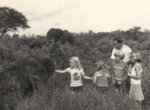
Friends from school coming to meet our elephant friends When I was seven, I started going to “proper school” in Nairobi. This was the Banda School, run along the British system. During the term time, my brother and I would live in Nairobi with our mother; in the holidays, we’d all scurry back to Tsavo. Then, when I turned thirteen, I started boarding school in UK, at Bryanston School in Dorset, again returning to Africa every holiday. It was this dual life that really taught me to cross boundaries, and to feel at home and be comfortable in different worlds, from East Africa to East Hampton. I started to thrive on the variety and contrasts in my life, something which influences my choices in life to this day.
I can tell you a million stories about strange encounters with wildlife – from elephants breaking down our front door and taking refuge on top of our dining room table as a hungry warthog (not so small and friendly up close) came looking for food in the house…to the weird and wonderful ‘pets’ which turned up at home, usually as a result of some injury they had incurred which needed nursing back to health. “Chupa” was a honey badger – a species feared and revered for its strength, obstinacy and ferocity – she came in as a pup with a horrible wound on her back…she became the most amazing “pet”, until she just became too strong to be in the house – ripping up floor tiles or emptying kitchen cupboards for the fun and noise-value of it – the final straw was when she stuck one of her long and extremely sharp claws up through the air vent in my father’s expensive (and professionally indispensable) editing machine and gleefully started pulling out wires, one by one…time to rehabilitate her and release her back into the wild, which we did – she even went on to successfully rear her own wild young. And then there was Billie – a turkey-sized Ground Hornbill – who made a mockery of the term “bird-brain” – what a clever creature and what a character! He (who turned out to be a “she”) hated anyone who wore flip flops, to such an extent that we would have to warn any guests about their footwear prior to arrival. Any unsuspecting flip-flop wearer would be sitting quietly eating lunch and then all of a sudden would let out a mighty yelp, as Billie had silently crept up under the table and launched a vicious attack with her 6-inch long beak…but we loved her dearly and she really was a member of our family. If we told her off for attacking flip-flop wearers or for knocking glasses off tables just for the sheer delight of watching them smash, then Billie would march off into the corner and sulk and it would take a lot of stroking and cajoling to get her to come and join in again. She came to us as a tiny chick, when her nest tree came crashing to the ground – when she reached adulthood, she took up with a wild mate and returned successfully to where she really belonged. We also had “Com” and “Puter” – so named because of the little bleeping noises they made all the time as a means to keep in contact in long grass – they were Dwarf Mongooses, tiny little creatures who in the wild live in complex social structures so are very dependent on their “band” – which we became. Com and Puter’s mother was hit by a car on the road – we picked her up to try to nurse her back to health, but after giving birth to these tiny wee creatures, she died. Com and Puter used to come everywhere with us (they had their own little travelling box, with a compartment each, as they were much like any other brother and sister who would fight to pass the time on long journeys!)
At the other end of the spectrum, my father’s work brought us into contact with the “bright lights” of Hollywood – or at least with some its most well known protagonists, from Meryl Streep to Sigourney Weaver. 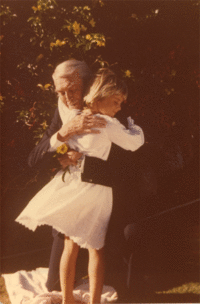
"Acting" in 'A Tale of Africa' with Jimmy Stewart (click to enlarge) In 1979, my father co-directed a film called ‘Tale of Africa’, which was made by a Japanese film company and starred James Stewart. I was recruited to play a scene with him where he is reminiscing about his granddaughter when she was a child…it did not seem to matter that his granddaughter in the film was half-Japanese with jet black hair, and I was a platinum blonde child with no front teeth at the time… As a six year old, I was totally unaware that this “old man” was a Hollywood legend…what was Hollywood? The Japanese film company was so fascinated by the fact that my brother and I were being brought up in the bush, without any of the conventional trappings of Western childhood, that they made a second film (for TV this time) about us and our life in Tsavo – I believe it was called simply “Peter and Tanya”.
When I was twelve, a highlight was being on set during the filming of “Out of Africa”…seeing Hollywood come to Africa (by then I knew what Hollywood was), and being able to explore the sets and meet the actors and even have my first ever ride in a helicopter to recce locations for an up-coming scene.
I also have fantastic memories of the time spent with my father when he was shooting “Gorillas in the Mist” up in the Virunga Mountains in Rwanda (and subsequently on set in the Aberdare Mountains in Kenya). Only five people at a time were ever allowed up near the gorillas, but my brother and I were fortunate to be able to go up and see them one day. The climb up into the forest was just magical – even if we had never found the gorillas (there is no guarantee each day that you are actually going to be able to find or keep pace with the animals), the forest was one of the most beautiful and strangely spiritual places I have ever been. Once we found the gorillas, the rule was that they could come to you, could touch you, but you must not reach out to them. At one point we were following this narrow path amongst the gorilla group when suddenly there was a violent crashing of vegetation behind us – we stepped off the path and the huge Silverback (male head of the family, weighing in at 40 stone) came lumbering past within a foot of us, without paying us the slightest attention. That’s the thing about most animals: they’re not aggressive unless they feel threatened. If you don’t interfere with them, they tend to leave you alone too. With the Silverback, had we not stepped out of his path, he probably would have batted us out the way with one of his massive hands (which could have broken every bone in our body), but not as an aggressive gesture, simply just because he wanted to walk down that path and in gorilla society the big boy is allowed to bat anyone else out the way!
I was wearing black leather gloves to guard against the ferocious stinging nettles (which grow taller than a man), and this baby gorilla was utterly fascinated by them – it was as if it could not understand why this strange human had gorilla hands….it sat and stared at me for ages, then slowly slowly plucked up courage to come up to me, and eventually reached out one little finger (just like E.T.) and touched my hand – then slowly bent down and licked my glove….what a moment! It’s difficult to describe the magic of that day we spent with the highly endangered mountain gorillas in the Rwandan forests, but I will never forget it.
At school, academia came easily to me, and I also spent a lot of time in the art department and playing sport which was a big part of my life. As my A-levels approached, I was under a lot of pressure from my teachers to apply for Oxford or Cambridge, as I was considered “perfect material” – however this threw up some dilemmas for me: I wanted to go out and see more of the world before deciding about university…I had also grown up surrounded by people who had made their own way without following the conventional routes in life…so instead of going straight off to university I headed back to Africa - I spent the next two years involved in a number of exciting projects. I co-wrote the narration for a TV documentary entitled “Keepers of the Kingdom” (sold to Survival Anglia and broadcast worldwide) – the film was about the role played by elephants in the ecological balance – showing how removing elephants from an environment (through poaching, for example) upsets the whole equilibrium of life and affects all the other animals. Of course, growing up in Tsavo, I not only experienced the wonders of nature at close hand, I also witnessed the results of mass poaching initially of rhinos (Tsavo’s rhino population plummeted from 6,000 to less than a dozen animals) and subsequently of elephants, in particular during the 1980s when gangs armed with automatic rifles would mow down whole herds of elephants at a time, often within earshot of the park HQ, and we would find these piles of corpses, one on top of the other, with the tiny babies crushed to death below their fallen mothers…all this so that someone could have an ivory trinket on their mantelpiece. Sadly, in 2013, we are again witnessing a continent-wide massacre of elephants, with seemingly insatiable demand for ivory from the Far East fueling the destruction of thousands of animals.
I also worked for a conservation project near Malindi on the Kenya coast. Amongst other things, this involved running eco-safaris (on camels – crotchety but charismatic beasts!) and again being surrounded by all manner of exotic orphaned animals, from vervet monkeys to buffalo.
After a couple of years, I left Kenya again to study Law at Edinburgh University (I never wanted to be a lawyer but felt it was a relevant preparation for whichever direction I chose to take in life). Following university, I had an early career in eco-friendly retail, which led me to founding my my own company, “Afromania Ltd”, designing and wholesaling stationery products, from greeting cards to writing paper, gift wrap, calendars, etc. Over the next eight years, I built up the company to become the dominant “fancy” stationery supplier in East Africa, exporting from Kenya throughout the region. Not surprisingly, the themes behind all my work were always the colours, cultures and wildlife of Africa.
When Afromania Ltd grew big enough to employ staff who could oversee the day-to-day running of the company for me, I started to get involved more directly with conservation work. Somewhere along the line, I spent a year living in Australia. I got to know my step-grandmother, Ethnee Holmes a Court (mother of the late business leader Robert Holmes a Court), who was married to my grandfather. My grandfather was killed by African bees before I was born, so getting to know Ethnee was a way to discover a little more about who my grandfather was.
During my time in Australia, my father was in the process of setting up the African Environmental Film Foundation, whose mandate is to make educational films about environmental issues in Africa, which are made specifically for African audiences in their own languages. I decided to return to Africa (again!) to work for two years as a volunteer for the Foundation, to help my father set up the administrative side of the organisation, and also to help with fundraising. Needless to say, I was also heavily involved with the production side of the films and the writing. Not only did this work require a lot of travel around East Africa but also to the United States, UK and Switzerland for fundraising. One highlight was premiering one of our films at the House of Commons, an event hosted by the Rt Hon John Gummer MP, and attended by a distinguished audience, including our Guest of Honour and long-time family friend, His Late Highness Prince Sadruddin Aga Khan. Despite being small, the Foundation reaches literally millions of people through its films, from government ministers to illiterate villagers in the most remote corners of the continent, and is having an enormous impact on the ground in Africa. I strongly believe that education is the most fundamental and important basis for progress and development (everywhere in the world) and that is why I believe the work of this Foundation is so important.
I met Ian Saunders, my husband, in 2001, and since then life has not slowed on the adventure front…Together we have travelled with our work and at play to Chile, the USA, France, Spain, Tanzania, Costa Rica….we even spent three years living in the Highlands of Scotland, during which period Ian spent most of the time working in Afghanistan and I spent a lot of time traveling to New York where I was working on a number of challenging design projects. But, eventually, Africa and conservation called us back, and we have returned again, not just to Tsavo and Kenya, but to work once again with the African Environmental Film Foundation, of which we are still Directors today. After six years of talking about it, we finally found time to get married too, and had the most wonderful wedding at Kulafumbi in September 2007.
In 2012, in response to the urgent need to provide conservation support in the region, Ian and I, alongside our co-founders Nzioki wa Makau, Richard Moller and Vanessa Watts, formed Tsavo Trust, a Kenyan not-for-profit organisation working in support of wildlife, habitat and communities in the greater Tsavo ecosystem. Tsavo Trust takes a hands-on, pragmatic approach to the integrated challenges of wildlife conservation and human development. Conservation in today's world has much wider implications than before; today, conservation is not just about wildlife protection (though that remains important), but is now also a matter of security (it is widely documented that wildlife products like ivory and rhino horn and other natural resources are used to fund extremist and organized criminal groups), economics, human development and ecology/biodiversity. At Tsavo Trust, we believe that long-term solutions need to take into account all these different aspects. One of our current goals is to build a strategic partnership between our two organisations, Tsavo Trust and the African Environmental Film Foundation - the latter providing conservation education and highlighting conservation challenges, with Tsavo Trust responding by providing realistic solutions on the ground. I feel like my life's experience to date - my conservation background spanning my entire life since childhood, my legal training, my business background, my not-for-profit/fund development experience - has all been leading towards this moment and the formation of this new dynamic organisation. Tsavo Trust - I hope - will now become the rest of my life's work.
I continue to be involved in business in Kenya on a private level, as Director of African Greetings Ltd, a Kenyan design company specializing in greeting cards.
In addition to my conservation beliefs, my interests include reading and discussing politics and current affairs. I also enjoy photography and writing – when I can find a spare moment - I would like to be a published author some day. I enjoy any time I can spend by any ocean and have snorkelled on the Great Barrier Reef, as well as in Western Australia (where I also learnt to Scuba dive), along the East African coast and off Hawaii. 
With my Dad, after completing my second Safari Half-Marathon (click to enlarge) Ian and I try to spend as much time as possible (not enough) keeping fit, indulging our passion for running (I have twice run the Safari Marathon at Lewa Downs in Kenya in aid of conservation charities – well, to be honest, I ran the half marathon, but 21km on dusty rocky roads at an altitude of 6,000 feet in Kenya’s heat seemed more than enough!), and we also enjoy trekking – I have twice climbed Mt Kenya (to Mt Lenana which is 16,500 feet)…All in all, life keeps us busy!
In Pictures:
Growing Up with Animals: A Wild Childhood in Africa…
Around the World: All Grown Up but still on the move…
Our wonderful Tsavo wedding...





